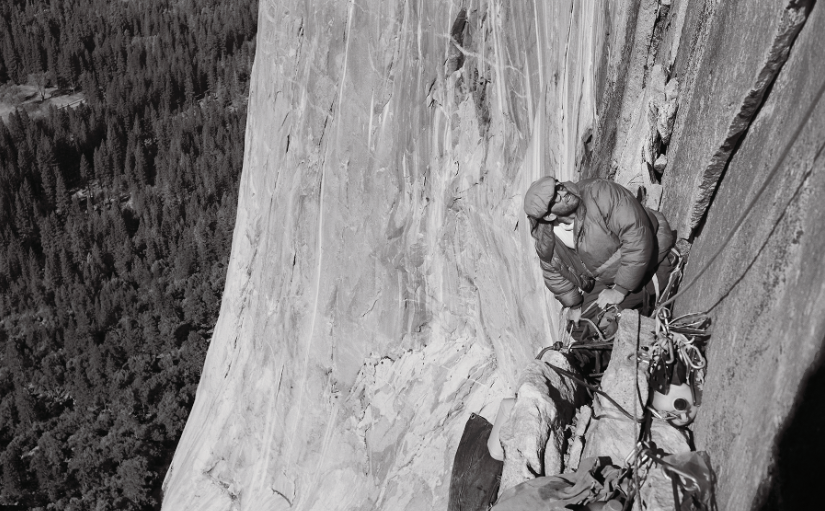
From essentially inventing modern Yosemite big wall climbing in the 1960s to pioneering a philosophy of climbing and conservation that continues to reverberate today, Royal Robbins is a legend by any measure. Now for the first time, award-winning author David Smart illuminates the full story of the man who the New York Times deemed the “conscience of rock climbers” — in all its soulful ambition, rivalry, and romance. Published by Mountaineers Books, Royal Robbins: The American Climber is the definitive biography of one of history’s most influential climbers, from a hardscrabble youth to the heights of Yosemite and beyond.
David is the founding editor of Gripped magazine. His biography of Austrian solo climber Paul Preuss was shortlisted for the Boardman Tasker Prize, and his biography of Italian climber Emilio Comici won that prize along with the Banff Award for Climbing Literature. Read on as David discusses his inspiration for this book, his takeaways about Royal Robbins, and more.
This interview originally appeared on Gripped.com.
Who was Royal Robbins?
He was the leader of climbing in Yosemite in the 1960s, beginning with the first ascent of Half Dome in 1957 with Jerry Gallwas and Mike Sherrick. He invented American big wall
climbing with the first continuous ascent of the Nose, the first ascents of the Salathé and North America Walls, with his frequent partners, Yvon Chouinard, Joe Fitschen, Chuck Pratt and others. He helped invent the modern grading YDS system, pushed hard in free climbing, made some of the first north American rock climbing road trips, was one of the first American climbers to garner a reputation internationally, introduced clean climbing to America, and pioneered the outdoor industry. He was also an intellectual, a prolific writer and a man with serious convictions, bred partly from growing up poor.
What was it about Royal that made him
become such a legend?
He would be one of the most important figures in climbing just for turning Yosemite, a backwater in climbing in the 1950s, into the world center of rock climbing. But he was also a communicator, a writer, who published his convictions, his achievements, and his foibles. He influenced the whole climbing scene. He was also an enigmatic personality, constantly on stage due to his preeminence. At times he could come across as arrogant or eccentric, but he was also deeply committed to his circle and the wider community. People wanted him to like them.
How did he inspire a generation of climbers?
Ethics. The notion that there ought to be rules to the game. His life showed how complicated a proposition that is, but the vision, the struggle with the ideals, remained. On a personal level, he mentored and learned from the young climbers, who in turn, tried to match and improve upon his record. In a way, however, they never did routes that exceeded the significance of his climbs.
What motivated you to write a book about him?
I’d written about European climbers Paul Preuss and Emilio Comici, who also had high ideals, were fascinating, complicated, human individuals, and led the world climbing scene. Robbins seemed to naturally come next, as he shifted the whole focus and cultural center of climbing from Europe to America. There was a lack of a modern biography of Robbins. The family, and particularly Tamara and Liz Robbins, his daughter and widow, respectively, as well as many of his friends, encouraged me and provided unpublished letters and papers that shone fresh light on Robbins. After I interviewed Glen Denny, a climbing partner of Royal’s, he passed away. Malian writer Hampate Ba wrote that a “dying man is a burning library.” It seemed an opportune time to collect all of these stories. Towering figures in their fields, like Robbins, or for that matter Beethoven or Van Gogh in their fields, challenge every generation to come to terms with what they mean for the tradition. This is my contribution to that understanding.
Will the readers be shocked by anything that wasn’t previously public knowledge?
Shock is a pretty subjective response. As a biographer, not much shocks me. The book has new (to most readers and me, anyway) insights into what made Royal who he was. There’s a lot of unpublished material he wrote about famous incidents like the removal of the bolts from Dawn Wall, and his struggles with being a climber before there was much societal support for it. His personality and its roots and expressions are explored as well as I could. His relationship with Warren Harding was definitely more nuanced and friendly than most people think it was. Camp 4 was a pretty wild place in the 1960s, in the best sense, as far as I’m concerned, but the reader can come to their own conclusions.
Read the full interview at Gripped.com. Royal Robbins: The American Climber is available for purchase at our Seattle Program Center bookstore, online, and everywhere books are sold.
This article originally appeared in our fall 2023 issue of Mountaineer magazine. To view the original article in magazine form and read more stories from our publication, visit our magazine archive.
 Mountaineers Books
Mountaineers Books

